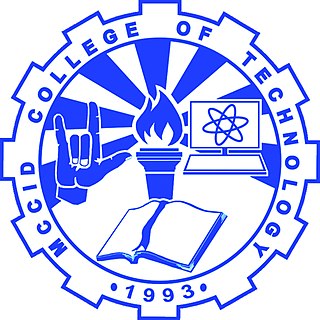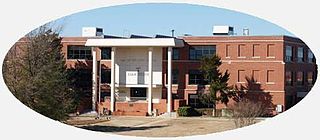An idea is an image existing or formed in the mind.
Contents
- Computing and software
- Government organizations
- Politics
- Law
- Music
- Automotive and industrial design
- Other organizations
- Other meanings
- See also
Idea or IDEA or similar may also refer to:
An idea is an image existing or formed in the mind.
Idea or IDEA or similar may also refer to:
The disability rights movement is a global social movement that seeks to secure equal opportunities and equal rights for all people with disabilities.
Special education is the practice of educating students in a way that accommodates their individual differences, disabilities, and special needs. This involves the individually planned and systematically monitored arrangement of teaching procedures, adapted equipment and materials, and accessible settings. These interventions are designed to help individuals with special needs achieve a higher level of personal self-sufficiency and success in school and in their community, which may not be available if the student were only given access to a typical classroom education.

The No Child Left Behind Act of 2001 (NCLB) was a 2002 U.S. Act of Congress promoted by the presidency of George W. Bush. It reauthorized the Elementary and Secondary Education Act and included Title I provisions applying to disadvantaged students. It mandated standards-based education reform based on the premise that setting high standards and establishing measurable goals could improve individual outcomes in education. To receive federal school funding, states had to create and give assessments to all students at select grade levels.
People with disabilities in the United States are a significant minority group, making up a fifth of the overall population and over half of Americans older than eighty. There is a complex history underlying the U.S. and its relationship with its disabled population, with great progress being made in the last century to improve the livelihood of disabled citizens through legislation providing protections and benefits. Most notably, the Americans with Disabilities Act is a comprehensive anti-discrimination policy that works to protect Americans with disabilities in public settings and the workplace.

The Individuals with Disabilities Education Act (IDEA) is a piece of American legislation that ensures students with a disability are provided with a Free Appropriate Public Education (FAPE) that is tailored to their individual needs. IDEA was previously known as the Education for All Handicapped Children Act (EHA) from 1975 to 1990. In 1990, the United States Congress reauthorized EHA and changed the title to IDEA. Overall, the goal of IDEA is to provide children with disabilities the same opportunity for education as those students who do not have a disability.
An Individualized Education Program (IEP) is a legal document under United States law that is developed for each public school child in the U.S. who needs special education. It is created through a team of the child's parent(s), the student and district personnel who are knowledgeable about the child's needs. IEPs must be reviewed every year to keep track of the child's educational progress.

Mainstreaming, in the context of education, is the practice of placing students with special education needs in a general education classroom during specific time periods based on their skills. This means students who are a part of the special education classroom will join the regular education classroom at certain times which are fitting for the special education student. These students may attend art or physical education in the regular education classrooms. Sometimes these students will attend math and science in a separate classroom, but attend English in a general education classroom. Schools that practice mainstreaming believe that students with special needs who cannot function in a general education classroom to a certain extent belong in the special education environment.

Manila Christian Computer Institute for the Deaf (MCCID) is a non-sectarian, post-secondary, Christian foundation school for the deaf in the Philippines authorized by the Technical Education and Skills Development Authority (TESDA) to offer non-degree computer and other technical training programs.

The Oklahoma School for the Deaf (OSD) is a public residential school for the deaf and hard of hearing students ages 2 through 18. The school teaches K-12 students in Sulphur, Oklahoma, United States.
Special education in the United States enables students with exceptional learning needs to access resources through special education programs. These programs did not always exist. "The idea of excluding students with any disability from public school education can be traced back to 1893, when the Massachusetts Supreme Court expelled a student merely due to poor academic ability". This exclusion would be the basis of education for all individuals with special needs for years to come. In 1954, Brown v. Board of Education sparked the belief that the right to a public education applies to all individuals regardless of race, gender, or disability. Finally, special education programs in the United States were made mandatory in 1975 when the United States Congress passed the Education for All Handicapped Children Act (EAHCA) "(sometimes referred to using the acronyms EAHCA or EHA, or Public Law 94-142) was enacted by the United States Congress in 1975, in response to discriminatory treatment by public educational agencies against students with disabilities." The EAHCA was later modified to strengthen protections to students with disabilities and renamed the Individuals with Disabilities Education Act (IDEA). IDEA requires states to provide special education and related services consistent with federal standards as a condition of receiving federal funds.
The right to a Free Appropriate Public Education (FAPE) is an educational entitlement of all students in the United States who are identified as having a disability, guaranteed by the Rehabilitation Act of 1973 and the Individuals with Disabilities Education Act (IDEA).
In the United States, the Individuals with Disabilities Education Act (IDEA) is a special education law that mandates regulation for students with disabilities to protect their rights as students and the rights of their parents. The IDEA requires that all students receive a Free and Appropriate Public Education (FAPE), and that these students should be educated in the least restrictive environment (LRE). To determine what an appropriate setting is for a student, an Individualized Education Plan (IEP) team will review the student's strengths, weaknesses, and needs, and consider the educational benefits from placement in any particular educational setting. By law the team is required to include the student's parent or guardian, a general education teacher, a special education teacher, a representative of the local education agency, someone to interpret evaluation results and, if appropriate, the student. It is the IEP team's responsibility to determine what environment is the LRE for any given student with disabilities, which varies between every student. The goal of an IEP is to create the LRE for that student to learn in. For some students, mainstream inclusion in a standard classroom may be an appropriate setting whereas other students may need to be in a special education classroom full time, but many students fall somewhere within this spectrum. Students may also require supplementary aids and services to achieve educational goals while being placed in a classroom with students without disabilities, these resources are provided as needed. The LRE for a student is less of a physical location, and more of a concept to ensure that the student is receiving the services that they need to be successful.

Rehabilitation counseling is focused on helping people who have disabilities achieve their personal, career, and independent living goals through a counseling process.
The Post Secondary Transition For High School Students with Disabilities refers to the ordinance that every public school district in the United States must provide all students with disabilities ages 3 through 21 with an individualized and free appropriate public education in the least restrictive environment. President Gerald R. Ford established this right when in 1975 he signed Public Law 94-142, the Education of All Handicapped Children Act (EAHCA). Parents of children with disabilities and other advocates hailed EAHCA as the "education civil rights act" for their children. Public education gives students with disabilities the opportunity to succeed in life. Specific language on transition was included in the Individuals with Disabilities Education Act (IDEA) of 1990, and again in the IDEA Amendments of 1997. Special education programs in public schools within the United States receive several different funds through federal and state levels to support the programs.
The University of the Peloponnese [Greek: Πανεπιστήμιο Πελοποννήσου(ΠΑ.ΠΕΛ.)] is a Greek tertiary educational institution, composed of campuses in Tripoli, Corinth, Kalamata, Nafplio, Sparta, and Patras.The University of Peloponnese offers 22 undergraduate study programs that grant corresponding titles and 36 postgraduate study programs.

Deaf education is the education of students with any degree of hearing loss or deafness. This may involve, but does not always, individually-planned, systematically-monitored teaching methods, adaptive materials, accessible settings, and other interventions designed to help students achieve a higher level of self-sufficiency and success in the school and community than they would achieve with a typical classroom education. There are different language modalities used in educational setting where students get varied communication methods. A number of countries focus on training teachers to teach deaf students with a variety of approaches and have organizations to aid deaf students.

The DO-IT Center is based at the University of Washington (UW) in Seattle, Washington. Founded in 1992, DO-IT’s mission is to increase the successful participation of people with disabilities in postsecondary education and careers, in STEM fields and careers, and in computing fields and careers throughout the U.S. It directs the national AccessSTEM program, and co-directs the national AccessComputing Alliance focused on engaging people with disabilities in computing fields.
The Council of Schools and Services for the Blind (COSB) is a consortium of specialized schools in Canada and the United States whose major goal is improving the quality of services to children who are blind and visually impaired.
People with disability in Liberia face many challenges. The cultural attitude towards disability in Liberia is largely negative. Often, it is seen as the result of witchcraft or as punishment for a person's behavior. However, the government and non-governmental organizations are working towards a more inclusive country for people with disabilities.